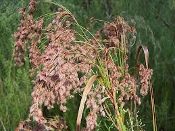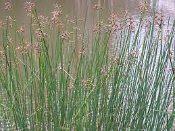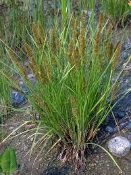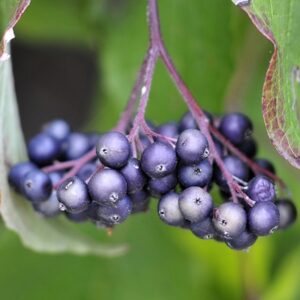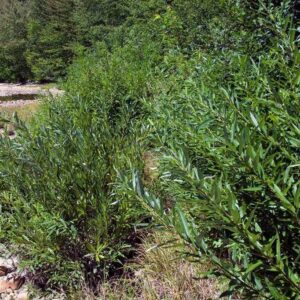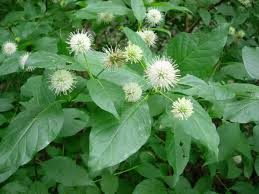$7.50
Scirpus cyperinus, Woolgrass,Native Grasses, Perennial Grass Plugs, Wetland Plants
Wholesale pricing is based on quantity. 50 plants (plugs) per tray with a required minimum purchase of 5 plants per species.
5 or more $7.50 each
25 or more $3.50 each
50 or more $1.65 each
300 or more $1.50 each
1,000 or more Call
For Shipping, Planting and additional FAQ’s please see “About our organically grown native plug trays “.
Native Oak Trees are dug and shipped while dormant, late November to early spring.
See all available Native Perennial Grasses & Organically Grown Plug Trays
Order Minimum
There is a minimum order total of $150.00.
before tax (VA residents only) and shipping.
There are NO EXCEPTIONS.
Description
Scirpus cyperinus, Woolgrass,Native Grasses, Perennial Grass Plugs, Wetland Plants
Aquatic animal habitat support:
Beneficial Insects:
Clay Soil- High clay content, fine texture:
Erosion Control:
FACW- Usually occur in wetlands, but may occur in non-wetlands:
Flood Tolerant:
Game Birds:
Grass/ Sedge/ Rush:
Herbaceous Emergent:
High Wildlife Value:
Loamy Soil- mostly silt, sand, some clay:
Moist Soil:
Native to Coastal Regions:
Native To Mountain Regions:
Native to Piedmont Regions:
OBL- Almost always occur in wetlands:
Occasionally wet soil (non tidal):
Perennial:
Pollinator support:
Sandy soil, coarse texture:
Small Mammals:
Songbirds:
Waterfowl:
Wet soil (Tidal):
Full Sun:
Botanic Name (s): Scirpus cyperinus
Common Name(s): Woolgrass, Woolgrass bulrush
Mature height :4-5ft
Bloom Time:August-September
Bloom color:Brown
Sun Exposure: Full Sun
Soil moisture: Wet
Soil Ph:4.8-7,2
Soil Type: Clay Soil- High clay content, fine texture
Loamy Soil- mostly silt, sand, some clay
Sandy soil, coarse texture
Native Habitat: Fresh tidal and non tidal marshes, swamps, forested wetlands, meadows, ditches, ponds, bogs
Notes: grows in large clumps, forms extensive colonies
Flood Tolerant Erosion Control
High Wildlife Value: SongbirdsGame Birds Small Mammals Waterfowl
OBL- Almost always occur in wetlands
Native to Coastal Regions
Native To Mountain Regions
Native to Piedmont Regions
Native Perennial Grass/ Sedge / Rush
Native Herbaceous Emergent
Pollinator Support
Aquatic animal habitat support
Scirpus cyperinus, commonly known as woolgrass, is a herbaceous emergent that is native to the eastern United States and eastern Canada. Other common names include cottongrass bulrush and brown woolly sedge. This sedge is very variable in appearance.
cirpus cyperinus is a common wetland species found along lake and pond margins and in wet ditches. It closely resembles 3 other Minnesota Scirpus species: Scirpus atrocinctus, Scirpus pedicellatus, and Scirpus pendulus. All share the common traits of a leafy round stem, leaf-like bracts, a terminal cluster with nodding branches and numerous small spikelets, and achenes with contorted bristles much longer than the achene. Scirpus cyperinus, the most common of the 4, is most easily distinguished by the spikelets clustered in groups of (usually) 3 to 7 or more. The other 3 species have spikelets all or mostly single, occasionally paired.
The common name of this species is misleading because it isn’t a member of the Grass family (Poaceae). Instead, it is a member of the Sedge family (Cyperaceae), like other Scirpus spp. To make matters even more confusing, these species are collectively referred to as ‘bulrushes,’ even though they are not members of the Rush family (Juncaceae). Notwithstanding such problems with nomenclature, Wool Grass (Scirpus cyperinus) is one of the more attractive bulrushes, particularly during the early autumn when its spikelets become an attractive woolly brown. It can be distinguished from similar species by considering the following characteristics: 1) Wool Grass has leafy culms, as opposed to leafless culms, 2) its brown spikelets are exceptionally woolly at maturity, 3) its inflorescence is a compound cyme with ascending to drooping branches at the apex of the culm, and 4) the branches of its inflorescence terminate in mostly small clusters of 2-12 spikelets, rather than solitary spikelets. Some local populations of Wool Grass have atypical spikelets that are a darker shade of brown or more cylindrical in shape than what is typically encountered. Such variations may be the result of hybridization with similar Scirpus spp.
Scirpus cyperinus, Woolgrass,Native Grasses, Perennial Grass Plugs, Wetland Plants
